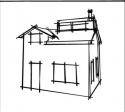

Originally Posted by
DrTimPerkins

Doubtful. $12,000 is 0.000009% of his net worth --- pocket change.
While I am certain your tap hole bumping research will put things in perspective .000009% of someone's net worth does not.
The following is a true story and keep in mind I am probably the poorest person ( although possibly the highest credit rating ) in Weston CT where average household income average is $250,000 a year so there is no bragging here just emphasis on the value of a hard earned dollar aboard anybody's boat.
In the year 2001 ( we all remember that one like it was yesterday ) I had two large purchases that year. One was a brand new 2002 Model Year Subaru Outback for $23,000.00 and the other happened to be $12,000 worth of Microsoft Stock.
Today the market value of that stock is $140,000. Not to mention about the MINIMUM $12,000 in cash dividends the stock has paid over that time.
So $12,000 over what seems like yesterday, becomes $152,000 today ... a lot of money to anybody ... even Bill Gates ... then, now or twenty years from now.
And the old 2002 Subaru came off the road on Jan 1, 2017 with 409 thousand miles on it. Parted it out for parts for the one I bought with 130 thousand miles on it and still pleasant on the road today with 260 thousand on it.
I am anxious to see those pictures and read up so thanks for the hard and diligent work as it helps me keep things in perspective when the sugar comes calling.
Its more about what we do with it then how much it is.
If you think it's easy to make good money in maple syrup .... then your obviously good at stealing somebody's Maple Syrup.
Favorite Tree: Sugar Maple
Most Hated Animal: Sap Sucker
Most Loved Animal: Devon Rex Cat
Favorite Kingpin: Bruce Bascom
40 Sugar Maple Taps ... 23 in CT and 17 in NY .... 29 on gravity tubing and 11 on 5G buckets ... 2019 Totals 508 gallons of sap, 7 boils, 11.4 gallons of syrup.
1 Girlfriend that gives away all my syrup to her friends.















 Reply With Quote
Reply With Quote


